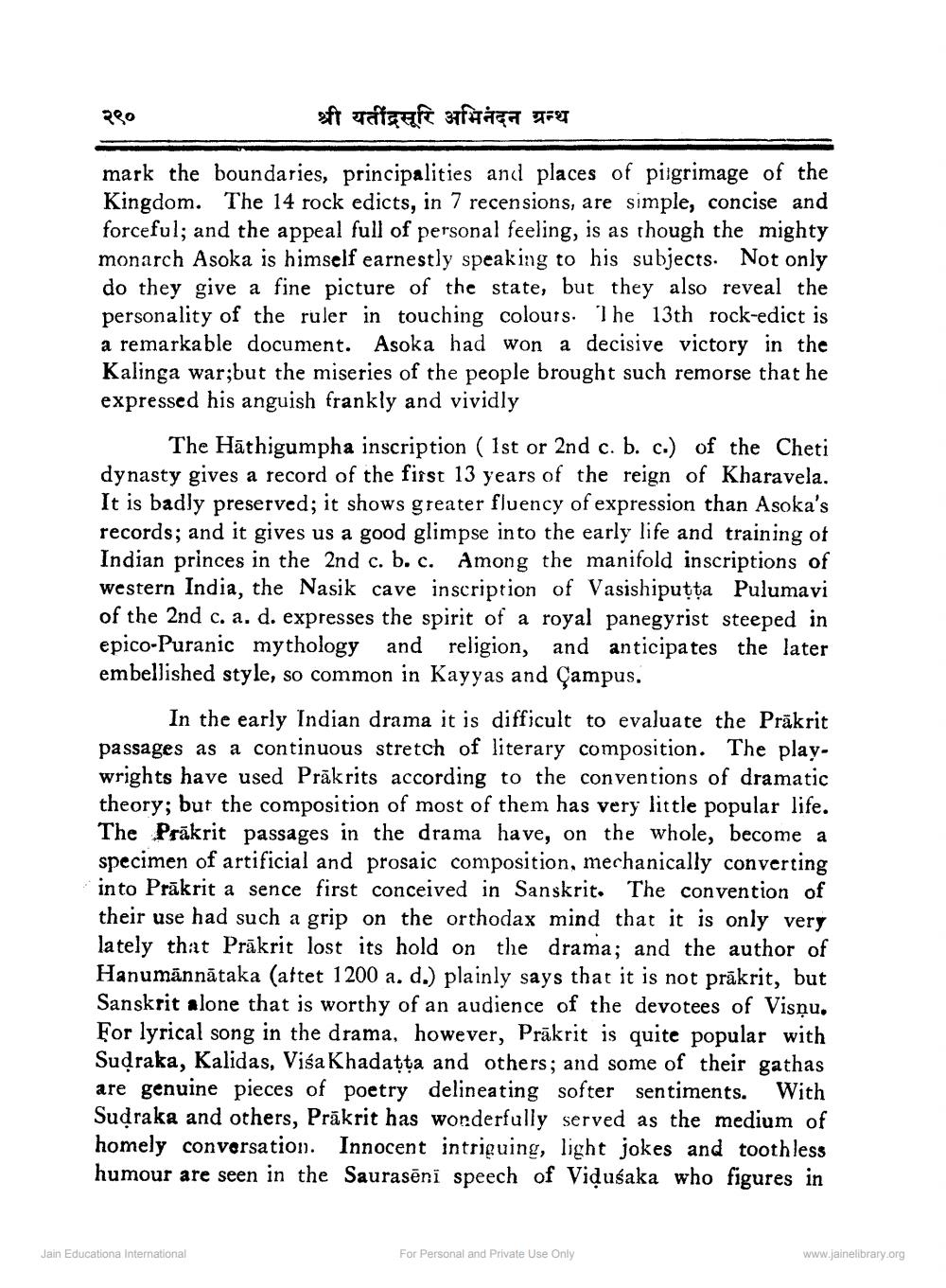________________
२९०
श्री यतींद्रसूरि अभिनंदन ग्रन्थ
mark the boundaries, principalities and places of piigrimage of the Kingdom. The 14 rock edicts, in 7 recensions, are simple, concise and forceful; and the appeal full of personal feeling, is as though the mighty monarch Asoka is himself earnestly speaking to his subjects. Not only do they give a fine picture of the state, but they also reveal the personality of the ruler in touching colours. The 13th rock-edict is a remarkable document. Asoka had won a decisive victory in the Kalinga war;but the miseries of the people brought such remorse that he expressed his anguish frankly and vividly
The Hāthigumpha inscription ( 1st or 2nd c. b. c.) of the Cheti dynasty gives a record of the first 13 years of the reign of Kharavela. It is badly preserved; it shows greater fluency of expression than Asoka's records; and it gives us a good glimpse in to the early life and training of Indian princes in the 2nd c. b. c. Among the manifold inscriptions of western India, the Nasik cave inscription of Vasishiputta Pulumavi of the 2nd c. a. d. expresses the spirit of a royal panegyrist steeped in epico-Puranic mythology and religion, and anticipates the later embellished style, so common in Kayyas and Campus.
In the early Indian drama it is difficult to evaluate the Präkrit passages as a continuous stretch of literary composition. The playwrights have used Prākrits according to the conventions of dramatic theory; but the composition of most of them has very little popular life. The Prākrit passages in the drama have, on the whole, become a specimen of artificial and prosaic composition, mechanically converting into Prākrit a sence first conceived in Sanskrit. The convention of their use had such a grip on the orthodax mind that it is only very lately that Prākrit lost its hold on the drama; and the author of Hanumānnātaka (attet 1200 a. d.) plainly says that it is not prākrit, but Sanskrit alone that is worthy of an audience of the devotees of Visņu. For lyrical song in the drama, however, Prākrit is quite popular with Sudraka, Kalidas, Visa Khadatta and others; and some of their gathas are genuine pieces of poetry delineating softer sentiments. With Sudraka and others, Prākrit has wonderfully served as the medium of homely conversation. Innocent intriguing, light jokes and toothless humour are seen in the Saurasēni speech of Vidusaka who figures in
Jain Educationa International
For Personal and Private Use Only
www.jainelibrary.org




